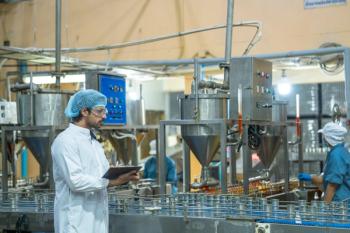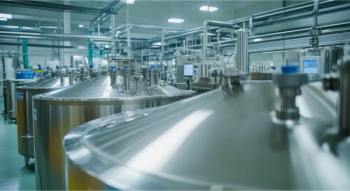
Portable NIR Technology Applied to Illicit Drug Detection in Australia
The challenge of efficiently and accurately analyzing illicit drugs in Australia has led to a groundbreaking study by an international team of researchers. Their work focuses on optimizing portable near infrared (NIR) spectroscopy combined with machine learning (ML) models to identify and quantify drugs swiftly and accurately. This advancement holds significant potential for law enforcement and forensic science (1).
The research, conducted by Harrison Fursman, Marie Morelato, Scott Chadwick, Florentin Coppey, and Pierre Esseiva, represents a collaboration between the Centre for Forensic Science at the University of Technology Sydney, the École des Sciences Criminelles at the University of Lausanne, and the Australian Federal Police. Their findings are detailed in the journal Forensic Science International (1)
Portable Drug Detection
Illicit drug analysis has long been a complex and time-consuming process, typically confined to forensic laboratories. The increasing volume of drugs trafficked within and into Australia has necessitated more efficient in-field testing methods. Traditional techniques, including color tests, ion mobility spectroscopy, and mass spectrometry, each come with limitations such as lengthy preparation times, destructive analysis, or lack of specificity (1,2).
NIR spectroscopy, however, offers a promising alternative. It is a non-destructive, cost-effective method that requires no sample preparation and can rapidly analyze substances even through transparent materials. When combined with chemometric modeling (ML algorithms), NIR spectroscopy provides robust qualitative and quantitative data on drug samples (1).
Read More:
Study Details and Methodology
The study aimed to evaluate the effectiveness of NIR spectroscopy in the Australian context, where drug characteristics can differ significantly from those in other regions. The researchers used a MicroNIR device (Viavi Solutions Inc.) to scan 608 illicit drug specimens seized by the Australian Federal Police. These included crystalline methamphetamine hydrochloride (HCl), cocaine HCl, and heroin HCl, along with various other substances (1).
To ensure accurate results, the researchers conducted 3,673 NIR scans and compared the data with reference laboratory values. The results were impressive: the MicroNIR device accurately identified crystalline methamphetamine HCl, cocaine HCl, and heroin HCl with accuracy rates of 98.4%, 97.5%, and 99.2%, respectively. Sensitivity was also high, though slightly varied, with heroin HCl identification being the least sensitive (91.3%) (1)
The quantification accuracy was equally remarkable, with 99% of values falling within the relative uncertainty of ±15%. This level of precision underscores the potential of NIR spectroscopy as a reliable in-field testing method (1).
Implications for Law Enforcement
The portable NIR technology demonstrated in this study offers several advantages for law enforcement and forensic applications. Its non-destructive nature and minimal sample requirement mean that samples can be tested on-site, reducing the risk of contamination and sample loss during transport. Moreover, the rapid analysis time (0.25-0.5 seconds per scan) allows for real-time decision-making, enhancing the efficiency of drug-related investigations.
By decentralizing drug analysis from the laboratory to the field, this technology can significantly improve the speed and accuracy of forensic data collection. This, in turn, can enhance the effectiveness of intelligence and investigative activities, leading to more informed decision-making and potentially reducing the prevalence of illicit drug trafficking (1).
Future Directions
While the study focused on methamphetamine, cocaine, and heroin, the researchers acknowledge the potential to expand this technology to other substances. Future work could involve optimizing chemometric models for additional drugs and further integrating NIR technology into operational workflows (1).
The success of this study in the Australian context also opens the door for international collaboration and the adoption of similar methodologies worldwide. As the technology evolves, it promises to become an invaluable tool in the global fight against illicit drug trafficking.
In conclusion, the development and evaluation of portable NIR technology for drug identification and quantification represent a significant advancement in forensic science. By enabling rapid, accurate, and non-destructive analysis of illicit drugs, this innovation has the potential to transform law enforcement practices and enhance public safety (1).
Reference
(1) Fursman, H.; Morelato, M.; Chadwick, S.; Coppey, F.; Esseiva, P.; Roux, C.; Stojanovska, N. Development and evaluation of portable NIR technology for the identification and quantification of Australian illicit drugs. Forensic Sci. Int. 2024, 362, 112179. DOI:
(2) Wermelinger, M.; Coppey, F.; Gasté, L.; Esseiva, P. Exploring the added value of portable devices such as near infrared spectrometer in the field of illicit drugs analyses. Forensic Sci. Int. 2023, 348, 111605. DOI:
Newsletter
Get essential updates on the latest spectroscopy technologies, regulatory standards, and best practices—subscribe today to Spectroscopy.




